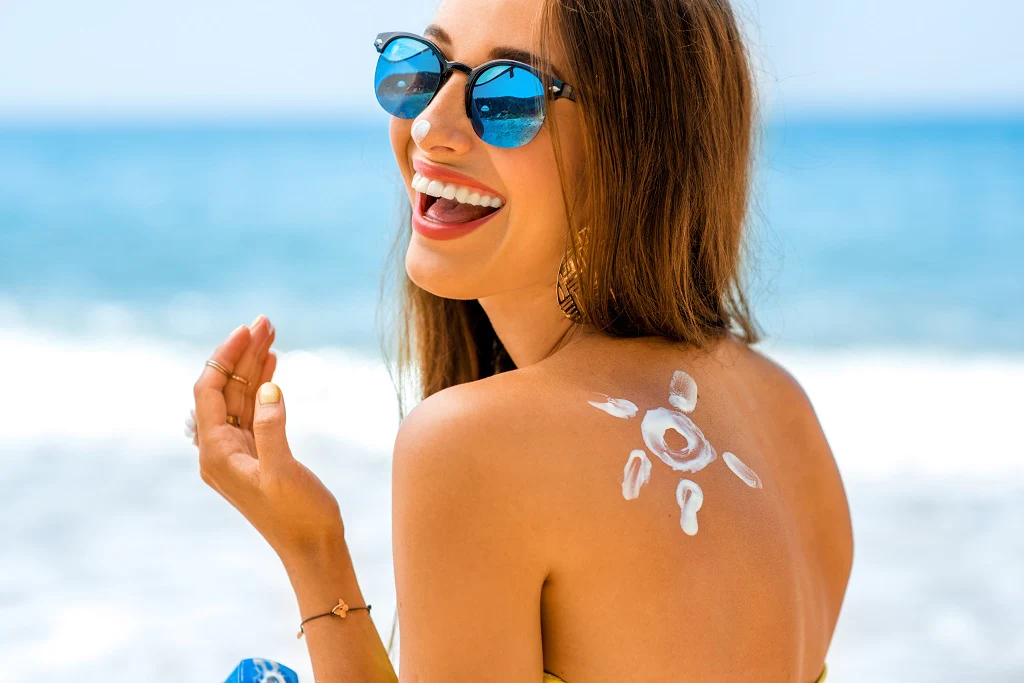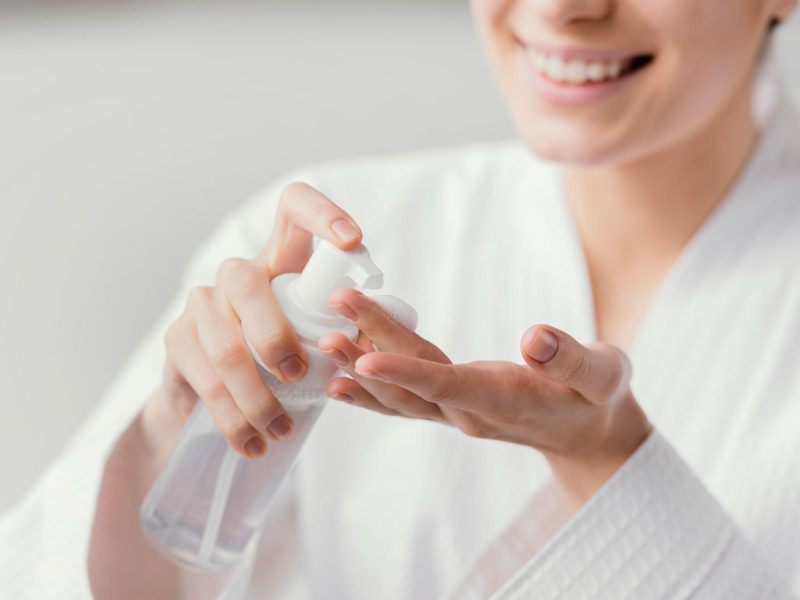While sunscreen is the most recommended and effective method for protecting your skin from the sun’s harmful UV rays, there are some alternative measures you can take to supplement sun protection. It’s important to note that these alternatives may not provide the same level of protection as sunscreen and should not be relied upon as a substitute.
6 Alternatives to Sunscreen
Protective Clothing
Wearing protective clothing, such as long-sleeved shirts, pants, wide-brimmed hats, and sunglasses, can help shield your skin from direct sun exposure. Look for clothing with UPF (Ultraviolet Protection Factor) labels for added sun protection.
Seek Shade
Whenever possible, seek shade, especially during peak sun hours (usually between 10 a.m. and 4 p.m.). Staying in the shade reduces your exposure to UV radiation.
Sunglasses
Wear sunglasses that offer UV protection to shield your eyes from harmful UV rays. Look for sunglasses labeled as providing 100% UV protection.
Limit Sun Exposure
Reduce your overall sun exposure by planning outdoor activities outside of peak sun hours. If you’ll be outside for an extended period, try to schedule activities in shaded areas or take regular breaks indoors.
Sun-Protective Umbrella
Consider using a sun-protective umbrella to create shade and shield yourself from direct sunlight when you’re outdoors.
Natural Sunscreens
While they are not as effective as commercial sunscreens, some natural ingredients like zinc oxide and titanium dioxide offer limited sun protection. However, it’s important to note that natural alternatives may not provide sufficient protection on their own and should be used in conjunction with other sun protection methods.
Remember, sunscreen is the most reliable and effective method for protecting your skin from the sun’s harmful UV rays. It’s recommended to use a broad-spectrum sunscreen with a sun protection factor (SPF) of 30 or higher, apply it generously, and reapply every two hours or after swimming or sweating.
What are the natural sunscreen alternatives?
While natural alternatives to sunscreen may not provide the same level of protection as commercial sunscreens, they can offer some limited sun protection. Here are a few natural ingredients that are sometimes used as alternatives to traditional sunscreen
Zinc Oxid
Zinc oxide is a mineral that can provide broad-spectrum protection against UVA and UVB rays. It sits on the surface of the skin and acts as a physical barrier, reflecting and scattering the sun’s rays. Look for products that contain non-nano zinc oxide for better safety and effectiveness.
Titanium Dioxide
Like zinc oxide, titanium dioxide is a mineral that provides physical sun protection. It works by reflecting and scattering UV radiation. Look for non-nano titanium dioxide in products for better safety.
Raspberry Seed Oil
Raspberry seed oil has been suggested to have natural sun protection properties. It contains antioxidants and a small amount of natural SPF. However, its exact level of sun protection is still under debate, and it should not be relied upon as the sole means of sun protection.
Carrot Seed Oil
Carrot seed oil is sometimes cited as having natural sun protection properties due to its high antioxidant content and reputed low SPF. However, like raspberry seed oil, its level of sun protection is limited, and it should not replace sunscreen.
It’s important to note that natural alternatives may not provide sufficient and reliable protection on their own. They can be used in conjunction with other sun protection methods like seeking shade, wearing protective clothing, and limiting sun exposure. If you choose to use natural alternatives, make sure to apply them generously and reapply frequently. However, for optimal protection, it’s generally recommended to use a broad-spectrum sunscreen with a suitable SPF as your primary sun protection method.
What to use if you don’t have sunscreen?
You can take to protect your skin from the sun’s harmful UV rays. While these alternatives are not as effective as sunscreen, they can provide some limited protection:
Seek Shade
Whenever possible, stay in the shade, especially during the peak sun hours (usually between 10 a.m. and 4 p.m.). Seek shelter under trees, umbrellas, or covered structures to reduce direct sun exposure.
Wear Protective Clothing
Cover up your skin with clothing to minimize sun exposure. Opt for long-sleeved shirts, long pants or skirts, and wide-brimmed hats to protect your face, neck, and ears. Dark-colored, tightly woven fabrics provide better sun protection.
Use Accessories
Wear sunglasses that provide UV protection to shield your eyes from harmful UV rays. Additionally, consider using an umbrella or a parasol to create shade and protect your skin from direct sunlight.
Time your Activities
Plan your outdoor activities outside of the peak sun hours. If possible, schedule them early in the morning or later in the afternoon when the sun’s rays are less intense.
Utilize Natural Barriers
Use natural elements as barriers to reduce sun exposure. Find shade under trees, use large leaves, or seek natural structures like cliffs or rocks for protection.
Be Mindful of Reflection
Remember that surfaces like water, sand, snow, and concrete can reflect UV rays, increasing your exposure. Take extra precautions in these environments.
While these alternatives can provide some level of sun protection, it’s important to note that they are not as reliable or effective as using sunscreen. Sunscreen is specifically formulated to provide broad-spectrum protection against UVA and UVB rays. Whenever possible, it’s recommended to use sunscreen with a sun protection factor (SPF) of 30 or higher and apply it generously to exposed skin. Reapply sunscreen every two hours or more frequently if sweating or swimming. If you consistently find yourself without sunscreen, it may be a good idea to keep a travel-sized bottle or sunscreen wipes in your bag or car for emergencies.
Also Read: Tanning Time Chart: Tips for perfectly tanned skin


